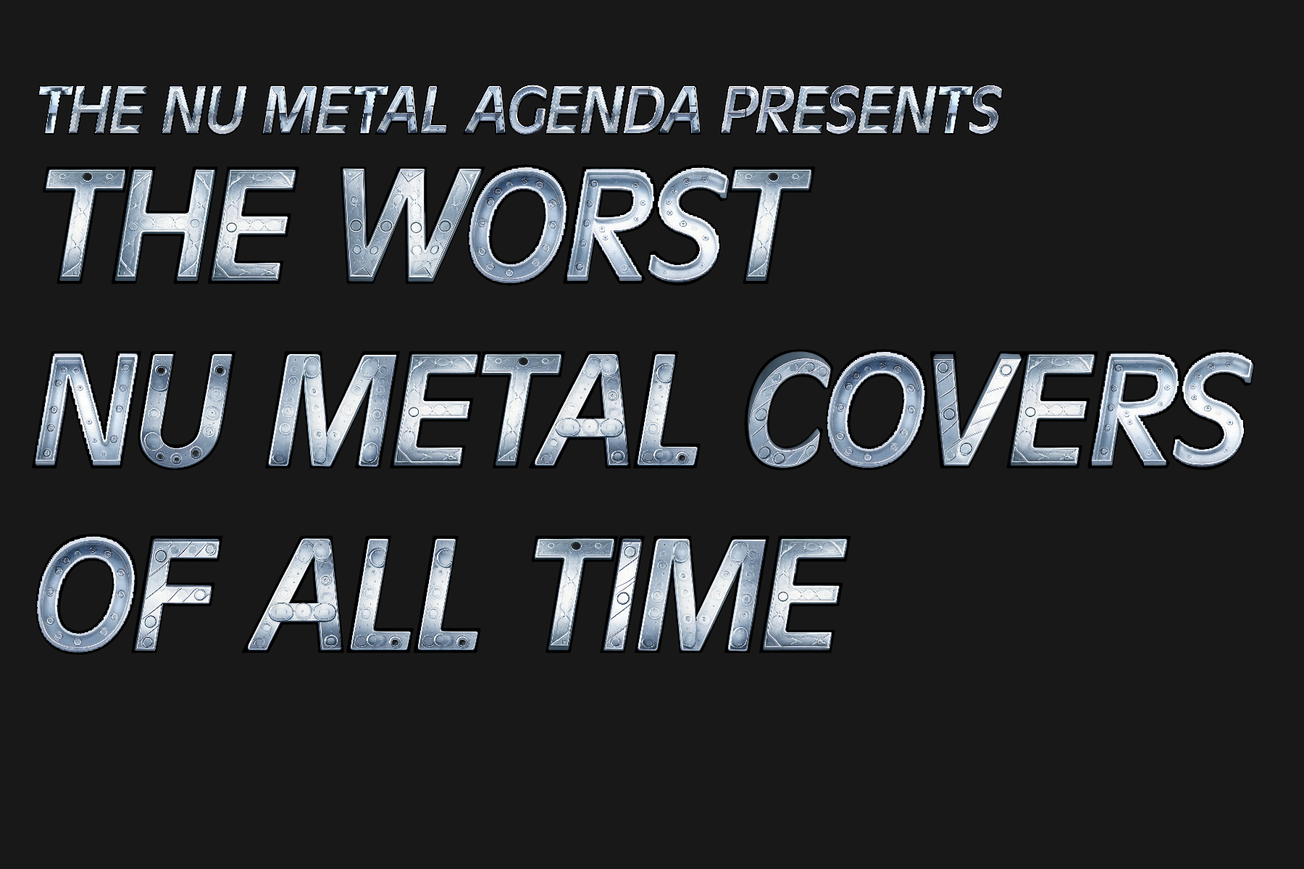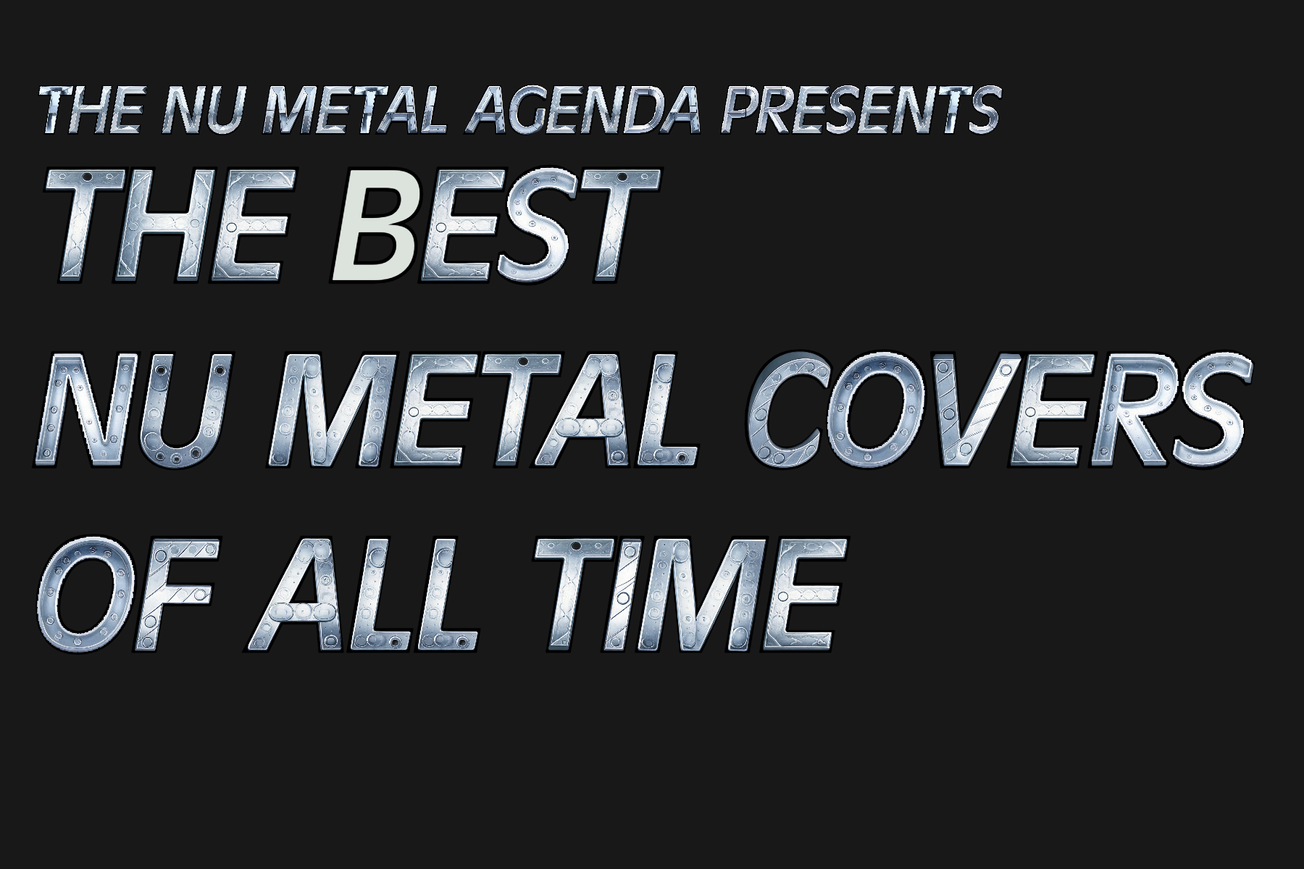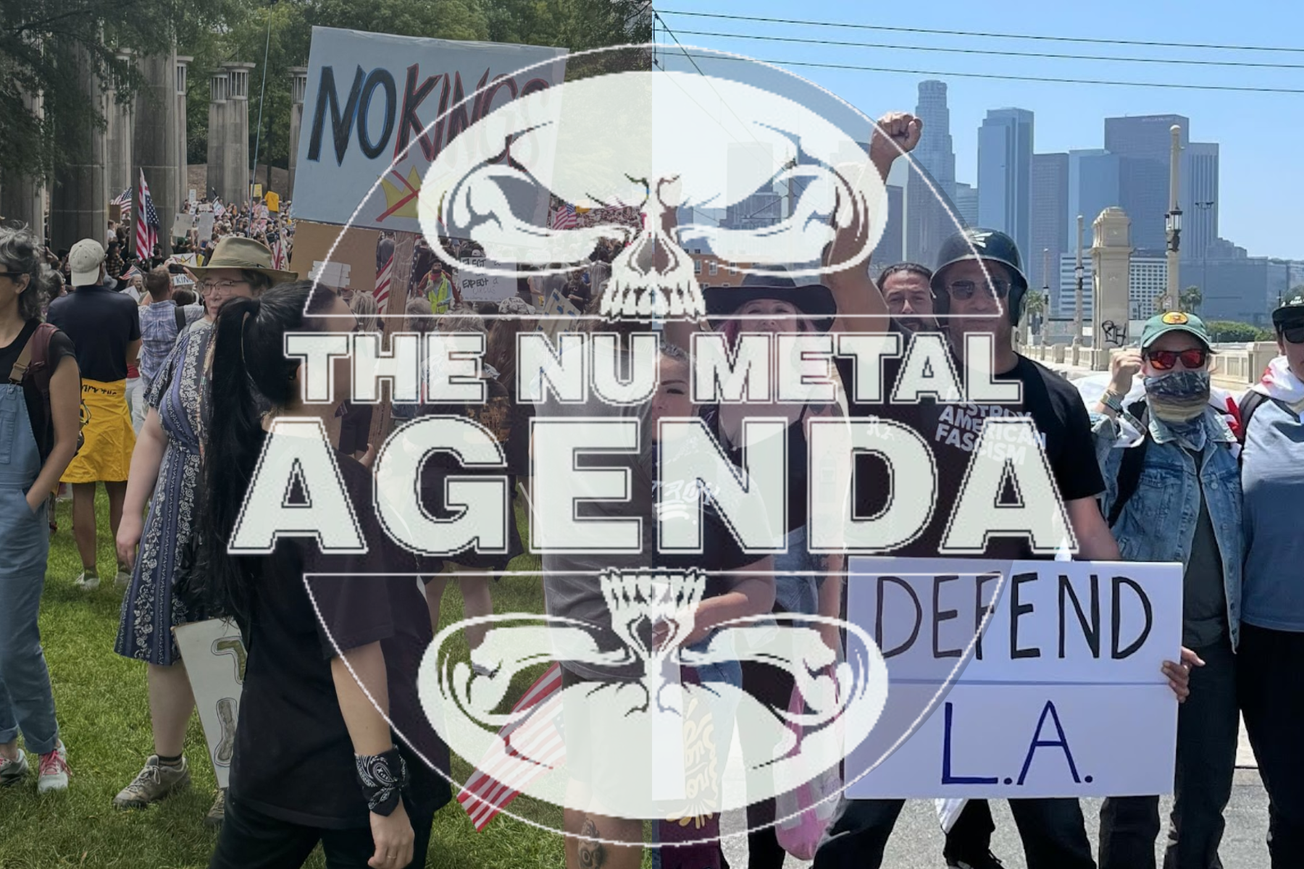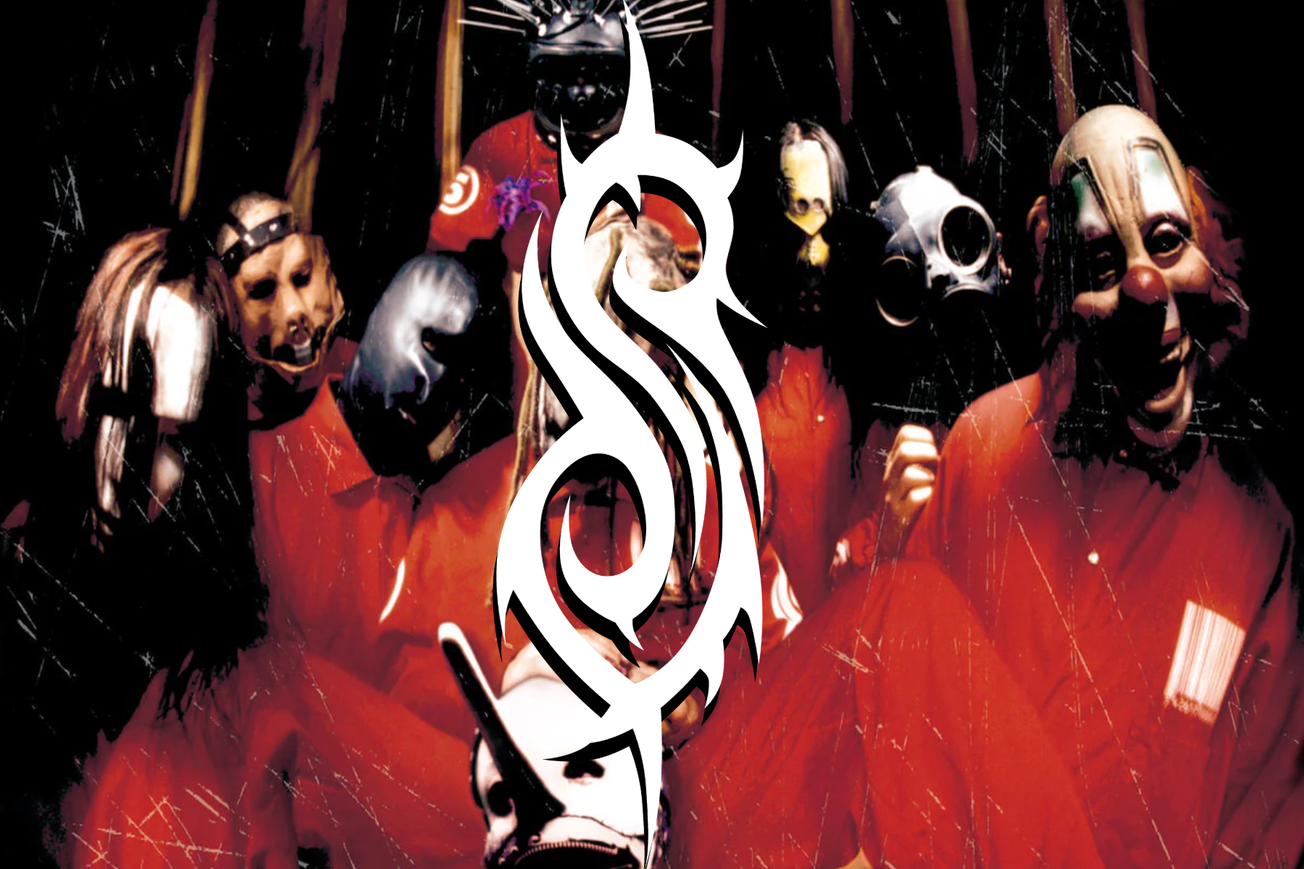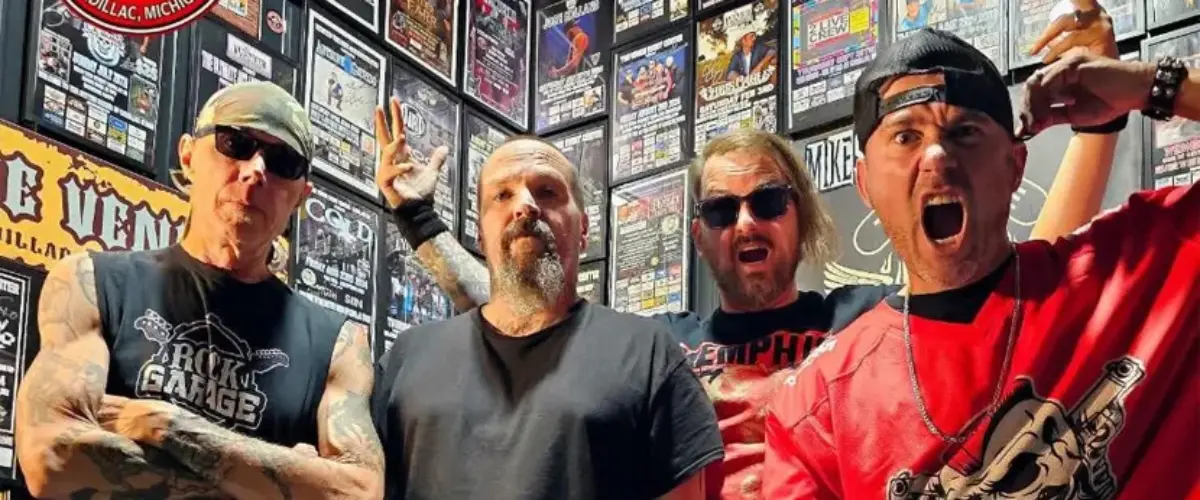They can't all be bangers.
Music is constantly evolving, but sometimes it is nice to give an old standard a fresh coat of paint. In trying to pay tribute, the plot can get lost, the feeling can be dissolved, and the listener may be left wondering if the artist should have just left well enough alone. While you can't blame someone for trying, you can blame them for committing the try to tape, and that is what this list is for. This is by no means a definitive list, but if you're looking for something to marvel at in awe or confusion, consider these cuts your square one.
"New Noise"
Crazy Town (originally by Refused)
[Live, 2001]
Nu metal has always walked a tightrope between innovation and excess. For every moment of brilliance, there’s been an equally memorable misfire. One of the most infamous examples of the latter is Crazy Town’s live cover of Refused’s biggest song—a bold swing that landed with a thud. It stands as a cautionary tale about what can happen when genre cross-pollination lacks thought and care.
First, it’s important to acknowledge the weight of the source material. Refused’s “New Noise,” from their groundbreaking 1998 album The Shape of Punk to Come, is a goddamn mission statement. Without exaggeration, this sonically ambitious anthem helped redefine post-hardcore and political punk with a fiery sense of purpose. Covering it is a tall order for any band. Consider past attempts by bands like Anthrax and The Used—then ask yourself whether they missed the mark or not. With Crazy Town, the answer is less debatable.
Crazy Town, known for their chart-topping 2000 hit “Butterfly,” stood at a very different end of the musical spectrum. Where Refused was urgent and cerebral, Crazy Town leaned heavily into rap rock swagger and club-ready hooks. That’s not to say one is inherently better than the other—they simply operate with different goals. But that difference made the choice to cover “New Noise” especially puzzling. The performance in question was live—a setting where energy can often mask flaws, but in this case, only amplified them. The Los Angeles band’s rendition lacked the sharp precision and revolutionary spirit that defines the original. Instead of the tightly controlled chaos of Refused’s version, the cover devolved into an uneven mix of shouted vocals, misplaced aggression, and musical sloppiness. Too much was happening all at once. Frontman Seth “Shifty Shellshock” Binzer (God rest his soul) even looked like he was ready to launch into a different song at any moment.
Yet even while recognizing how much of a clusterfuck this is, it’s important to approach this with nuance. To their credit, Crazy Town never pretended to be something they weren’t. Beyond butterflies and Red Hot Chilli Peppers samples, their identity was rooted in high-energy, anything-goes performances. Their swift attempt to branch out—even if misjudged—can be seen as a form of artistic curiosity. Perhaps they admired the song’s power and wanted to harness some of it. If nothing else, their boldness is a reminder of nu metal’s reckless, no fucks given spirit. This cover is infamous—not because Crazy Town didn’t care, but because they misread the challenge, and never imagined it would live forever online.
-Timon De Zwaef
"Fuck Tha Police"
Dope (originally by N.W.A.)
[Epic/Flip, 1999]
There is something very late Nineties about a bunch of white guys covering a song that is nigh on a spiritual for the Black community. While Dope correctly elect not to use the N-word, slipping in the F-slur in its place is a far less correct move. While the alternative music community was certainly the target of police harassment, particularly around the time that Dope's cover came out, the vitriol of “Fuck Tha Police” was so concentrated, so focused, that while the message may be universal, the adaptation of such serves to diminish the impact. Worse, the band released their cover twice: once for their 1999 debut album Felons and Revolutionaries, and again for their 2005 album American Apathy. I guess there really were Xer0 fucks given.
-Lucia Z. Liner
"Comfortably Numb"
Hot Action Cop (originally by Pink Floyd)
[Self-Released, 2012]
We’ve written at length about Hot Action Cop’s generally inadvisable contributions to the nu-metal oeuvre before–their 2003 single “Fever for the Flava” landed at #7 on our 10 Worst Nu Metal Songs of All Time roundup, with my colleague Justin digging deep into the regrettable cultural conditions and emotionally stunted cul-de-sacs of Bush-era male adolescence that made the Nashville group’s limited commercial success possible in the first place. There’s not much more I can say about that song and the accompanying trend of post-grunge guys high-fiving each other over the emotionally-disconnected sex they wanted to have or otherwise claimed to be having, so I’ll instead draw your attention to the cover of Pink Floyd’s “Comfortably Numb” that the same band recorded during a touring break in 2003 and–in a brief flicker of better judgment–sat on for nine years before releasing it online as a single in 2012.
A frequent question I find myself asking about this band’s music is “Who is this even for?” All art exists in conversation with an audience, real or imagined, and in most cases with Hot Action Cop’s music the prototypical listener’s probably just a horny dude who likes loud guitars. At this point, you’re probably thinking that a dark, introspective prog anthem about drug-induced dissociation does not necessarily sound like a great choice for this type of band to cover, a belief that hitting “play” on this track and immediately getting blindsided by a Third Wave-ass ska groove will do absolutely nothing to dispel. And once you’ve adjusted to the initial outburst of genre terrorism, you get to deal with drummer Kory Knipp (who, let’s be clear, is fully capable of doing other stuff!) dropping into his best ‘90s Lars Ulrich impression while the band enthusiastically turns up to 11 on the first pre-chorus. And then we stay loud and go double-time for the chorus, for some reason. I don’t get it. The song choice and the way these guys approach it just lands as a collage of stuff they think is cool without reflecting on why it works in the first place, or how it all fits together. Frontman Rob Werthner characteristically hams it up with his unabashedly goofy delivery all the way through, placing extra emphasis on seemingly random words and landing some genuinely weird pronunciations–“you are only coming through in wavs”–ending the song on an ‘80s power-metal inspired screamed high note. I can not stress enough how little they needed to do all this as part of a Floyd cover, but here it stands, as a testament to man’s hubris. Props to them.
-Gabi Brown
"Fucking Hostile"
New Years Day (originally by Pantera)
[Century Media, 2018]
Pantera nearly single-handedly gave birth to groove metal, nu metal's slightly less weird cousin, with their second Phil Anselmo-era LP Vulgar Display of Power. The lightning-fast and pummelling “Fucking Hostile” borrows from the violence of hardcore punk and the blitzkrieg pacing of thrash for what would become one of the band's signature songs to play live. For an aggressive song to stand out amongst a catalog of aggressive songs like this is no small feat, so for alt-metallers New Years Day to put a governor on the proverbial vehicle is damn near criminal. Granted, the fact that their version has 100% less Southern crosses is a nice touch, but that's burying the lede on this burial of an iconic crossover song.
-Lucia Z. Liner
"Bad Town"
Hollywood Undead (originally by Operation Ivy)
[Interscope, 2009]
Most people who know me in real life know I love another 90’s subgenre that is constantly hated and loved: ska punk. What happens when nu-metal and ska come together?
Spoiler alert, ska done poorly is still worse than doing pay tribute at all. In defense of Hollywood Undead’s cover of Operation Ivy’s "Bad Town," It’s not a wrong choice on paper. Ska simply has always just been a fusion and a culturally unified genre. It inspired reggae, ska punk, and even hip-hop. Whether those its original intentions as a genre with roots in r&b and rock with elements of calypso, ska was never really just a punk subgenre with horn section. It's the mento-like rhythm and rock instrumentation. In fact ska horns were only added after the Skatalites popularized jazz elements. That’s why a ska-metalcore band like FOLLY doesn't have horns and is still ska. Ska is whatever you want, in this respect.
So what does this cover irk me so much? It's not cultural appropriation like many people say as ska has always been a multicultural genre (especially the 2-tone genre, a class struggle between white and black people in England). Again, it’s not like ska doesn't feature rap-rock passages and verses (i.e. "Decolonize Yr Mind" by Jer and Pierce Jordon's verse on "Say Gay or Goodnight" and most, if not all, of Eichlers’ or MC Lars' catologue.
Then what is it? It’s three things.
1) Ska is seen as corny to the general public. A lot of people think of it as a fun novelty at best, and at worst call it cultural appropriation without even considering talking to a non-white fan. It's the mozzarella stick genre to most fans, which is not only wrong, but erases the history of the genre's racial unity.
2) It's painfully mediocre. Why? It sounds like the band wanted to show cool music to a new audience, but instead just copied the song note-for-note perfectly on the grid. I’d rather listen to that STZA crack proto-crunkcore song than he did with MC Lars. While not great, it's at least fun and marginally original.
3) It’s not even the best Op Ivy song. THEY COULD’VE DONE AN ACTUALLY GOOD OP IVY SONG. There's already plenty of ska with screaming and breakdowns. There's no excuse to just cop out here and put it on a B-sides / live album, in my opinion. God forbid you be edgy and forward thinking for the right reasons instead of saying the F-slur. I get it, it was almost a decade ago, but pick a struggle.
-rosiegothicc
"Fast Car"
Darwin's Waiting Room (originally by Tracy Chapman)
[MCA, 2002]
During nu metal’s brief and overwhelming ascent to the pinnacle of American pop culture, the eighties cover emerged as a repeated touchstone, a bridge between the genre’s wax-winged ascent toward a blindingly bright future and an equally frenetic past. We got Disturbed’s take on “Shout” and “Land of Confusion,” a Limp Bizkit cover of George Michael’s “Faith,” and a brutally resonant System of a Down reimagining of Berlin’s synth-pop hit “The Metro.” There has always been something compelling to me about the hubris of these attempts, a genre that most music critics resented having to write about in the first place reaching back to vivisect their sacred cows and sew them back together for a new captive audience. Sometimes, you get a triumphant vindication of the new guard’s ability to bottle lighting.
And sometimes, you get one of nu metal’s also-rans taking on one of the best songs of the eighties and tripping over themselves for four minutes. The thing about Miami nu outfit Darwin’s Waiting Room is they came hard out the gate with ideas and energy, but it didn’t always come together convincingly. A nu metal cover of “Fast Car,” recorded for the Nascar on FOX: Crank It Up compilation, feels like it should work–lead vocalist Jean Baptiste-Blot, alias Jabe, does more than anyone else in the band to sell this vision, shifting Tracy Chapman’s blunt lyrics about working class hope and suffering into a new key and melody, and walks a quintessentially nu tightrope between vulnerability and aggression that’s almost convincing.
But the rest of the band? They’re taking a song no artist has touched successfully without a lot of earnest reverence and stripping it for parts to create a vapid advertisement for fast cars. The singular, circular guitar melody of the original recording is replaced by a two-note riff evoking a revving engine that rapidly gives way to a forgettable droptuned bounce, as rapper and screamer Michael “Grimm” Falk tries and fails to make vulnerable lines like “City lights lay out before us / And your arm felt nice wrapped ‘round my shoulder” sound hard. There’s a baked-in goofiness to Grimm’s barks that serves the band well in other contexts, but on this track it’s just jarring, crashing through the drywall of the parts that are working and bringing the whole house down with an arrogant “Ohhhh YEAH.” All that’s left when you sift through the rubble is a brand of cheese that’s so specific, you can walk or drive to your nearest convenience store and find it in a jar on the shelf, right next to the tortilla chips.
God, what were they thinking?
-Gabi Brown
Staind ft. Fred Durst & DJ Lethal
"Bring The Noise" (originally by Public Enemy)
[Flip/Interscope, 1999]
I know it may be cool to shit on Limp Bizkit's covers of "Faith" and "Behind Blue Eyes," and Fred Durst's cinematic output is questionable for sure, but this might be the worst thing involving any member of the Jacksonville faithful. This is before you consider the fact that modern conservative blowhard Aaron Lewis covered a song made famous by a hip-hop institution like Public Enemy, and while Anthrax's version will be better known to metal fans, this version is nothing like theirs.
Diehard fans of either band shouldn't treat this as a hidden gem or a diamond in the rough. No, this is more of a "should have been left in the cold, cold ground" situation, as it didn't feature on standard releases of Staind's Dysfunction album. It was on the Japanese edition of the album, as well as some promotional copies stateside, but save for DJ Lethal's top-tier scratch work, there's not much substance here. And far be it for me to criticize someone's overt profanities, but does Fred have to slip "fuck" into every cover he does? Were it not for "Behind Blue Eyes" having the emotional weight that it does, I bet he would have slid one in there.
Check it out for yourself if you're a completionist like me, but don't say we didn't warn ya.
-Lucia Z. Liner
Limp Bizkit
"Behind Blue Eyes" (originally by The Who)
[Flip/Interscope, 2003]
It’s possible no album has ever been as aptly titled as Limp Bizkit’s 2003 amalgamation Results May Vary. Their first and only album without Wes Borland, I find it best viewed through the lens of a breakup. Fred Durst is reimagining himself after parting ways with a collaborator who shaped who he was, putting the pieces back together, and seeing what fits in his new independent life. One of those ill-fitting pieces is a cover of The Who’s 1971 “Behind Blue Eyes.” Now, this is not a good song, we don’t need to pretend otherwise. Fred’s singing like he’s on the verge of tears, the corny lyrics delivered impossibly seriously, the original verse, the overwrought Speak & Spell bridge, the music video (oh my god, the music video) it all just makes you cringe. But it's so earnestly melancholy I can't help but be charmed by it. It’s easy to mock Fred mournfully singing “nobody knows what it’s like to be the bad man,” he’s a rock star on top of the world, what does he have to complain about? But at the same time, I think there is some truth to it. Fame is deeply isolating, and at this point he and Limp Bizkit had been the country’s favorite punching bag for quite a while. There weren't many people who could know what it was like to be that publicly hated, and that same success was taking him away from his newborn son. Where this cover fails isn't so much that it's bad (although it's not good) it's that it's too full of contradictions. Too earnest to be funny, too slickly produced to benefit from that emotion, it ends up as a joke you feel a little bit guilty about laughing at.
-Riviera


